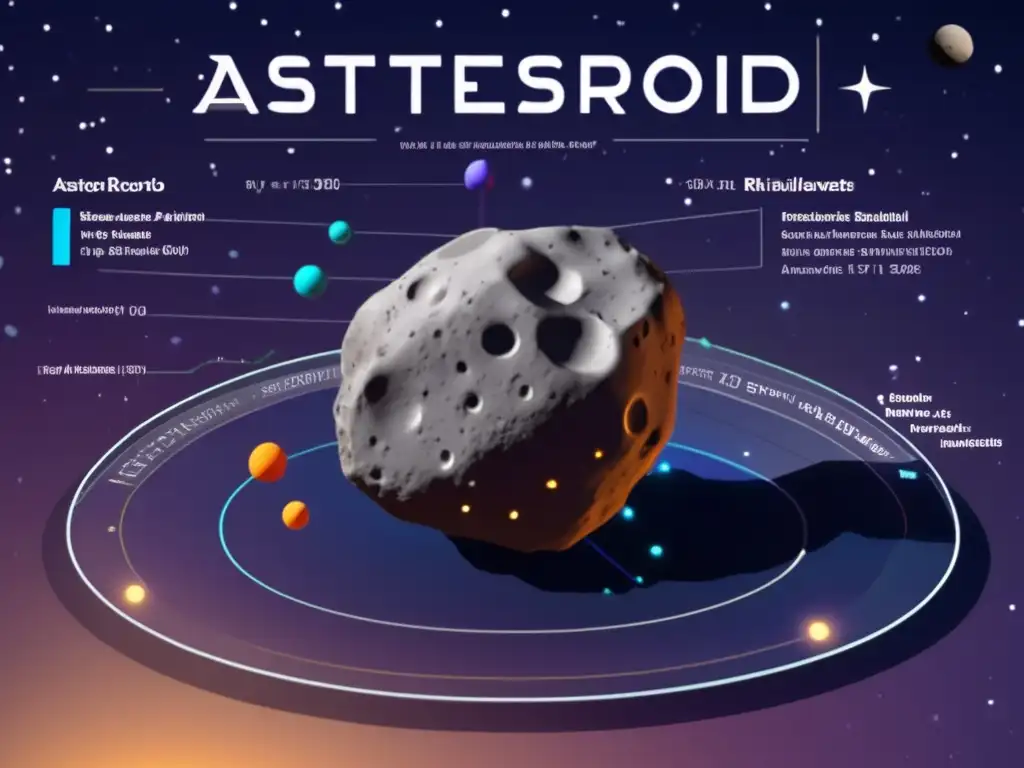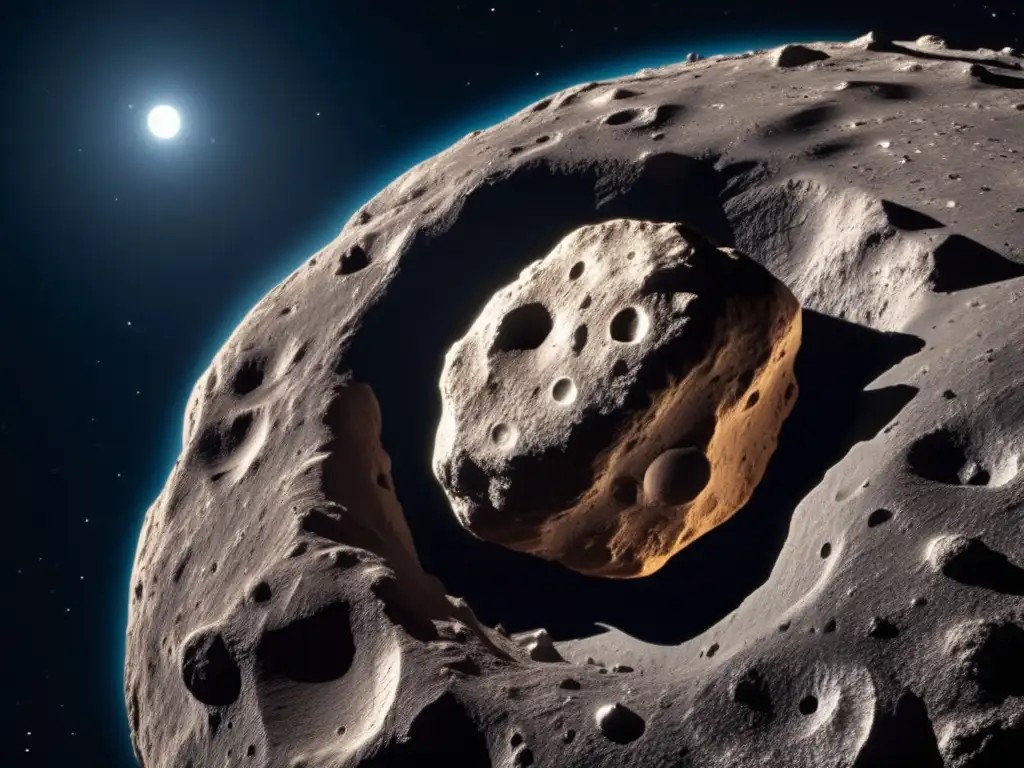How To Determine The Size Of An Asteroid Through Observation

Introduction
Asteroids are celestial objects that orbit the Sun, typically found in the asteroid belt between Mars and Jupiter. Studying asteroids can provide valuable insights into the formation of our solar system and their potential impact on Earth. One important aspect of asteroid research is determining their size, which helps us understand their composition, structure, and potential threat level. In this article, we will explore various methods to determine the size of an asteroid through observation.
Size Determination through Lightcurve Analysis

Using the Yarkovsky–O'Keefe–Radzievskii–Paddack (YORP) Effect
The Yarkovsky–O'Keefe–Radzievskii–Paddack (YORP) effect is a phenomenon that causes small asteroids to experience spin rate changes due to the uneven heating and cooling as they rotate. By observing the changes in brightness of an asteroid over time, astronomers can determine its shape and size. This method involves analyzing the lightcurve, a graph showing the brightness variations of the asteroid during its rotation. By comparing the observed lightcurve with computer models, scientists can estimate the asteroid's size and shape.
Using Photometric Observations
Photometric observations involve measuring the variation in brightness of an asteroid as it rotates. By studying the amplitude and period of these brightness variations, astronomers can estimate the asteroid's size and shape. This method relies on sophisticated telescopes and photometric equipment to accurately measure the changing brightness of the asteroid. The obtained data is then compared with theoretical models to determine the asteroid's physical properties.
Using Radar Imaging
Radar imaging is another powerful method to determine the size of an asteroid. By bouncing radio waves off the surface of an asteroid and analyzing the reflected signals, astronomers can create detailed images of the asteroid's shape and size. Radar imaging provides high-resolution data, enabling scientists to measure the dimensions of features on the asteroid's surface, such as craters or mountains. This technique has been used to accurately determine the sizes of several near-Earth asteroids.
Size Determination through Stellar Occultation

Definition and Methodology
In a stellar occultation, an asteroid passes in front of a star, causing the star's light to momentarily dim. By observing these occultations from different locations on Earth, astronomers can precisely measure the time it takes for the star to disappear and reappear. This information, combined with the asteroid's known distance, allows scientists to calculate the asteroid's size and shape using triangulation techniques.
Importance of Stellar Occultations
Stellar occultations provide accurate measurements of an asteroid's size and shape, especially for smaller asteroids that are challenging to study directly. This method has contributed significantly to asteroid research by revealing valuable information about their physical properties, including irregular shapes, binary systems, and even the presence of moons. Stellar occultations have also helped identify potential candidates for future asteroid missions.
Advancements in Stellar Occultation Observations
Technological advancements have greatly improved the accuracy and accessibility of stellar occultation observations. Portable and affordable digital cameras, equipped with GPS receivers, are now widely used by amateur astronomers to record occultation events. These citizen science efforts have expanded the observation network, increasing the chances of detecting and studying such events. Additionally, space-based telescopes, like the Hubble Space Telescope, have contributed valuable data through their unique vantage points.
Size Determination through Asteroid Thermophysical Modeling

Thermal Emission Spectroscopy
Thermal emission spectroscopy is a technique used to analyze the heat radiation emitted by an asteroid. By observing the infrared wavelengths of an asteroid's thermal emissions, astronomers can determine its surface temperature and composition. This information, combined with other observational data, allows scientists to construct detailed thermophysical models of asteroids, providing insights into their size, shape, and composition.
Asteroid Shape Models
Asteroid shape modeling involves constructing three-dimensional digital models of asteroids based on various observations, such as radar imaging and lightcurve analysis. These models provide accurate representations of an asteroid's size, shape, and surface features. By comparing the models with observed data, astronomers can refine their understanding of the asteroid's physical properties and estimate its size.
Combining Multiple Observation Techniques
It is essential to combine multiple observation techniques, such as lightcurve analysis, radar imaging, stellar occultations, and thermophysical modeling, to obtain accurate size determinations for asteroids. Each method provides unique insights into different aspects of an asteroid's physical characteristics, contributing to a more comprehensive understanding of these celestial objects.
Frequently Asked Questions

-
Question 1: How do astronomers determine the size of an asteroid?
Astronomers determine the size of an asteroid through various observation techniques, including lightcurve analysis, radar imaging, stellar occultations, and thermophysical modeling.
-
Question 2: What is the YORP effect?
The Yarkovsky–O'Keefe–Radzievskii–Paddack (YORP) effect causes small asteroids to experience spin rate changes due to uneven heating and cooling. By analyzing the changes in brightness over time, astronomers can estimate an asteroid's size and shape.
-
Question 3: How do stellar occultations help in determining asteroid size?
Stellar occultations involve observing an asteroid passing in front of a star. Precise measurements of the timing of the occultation from different locations allow astronomers to calculate an asteroid's size using triangulation.
-
Question 4: What are thermophysical models of asteroids?
Thermophysical models combine observations of an asteroid's surface temperature and composition with other data to create detailed digital models. These models provide insights into an asteroid's size, shape, and composition.
-
Question 5: Why is it important to combine multiple observation techniques?
Combining multiple observation techniques allows astronomers to obtain more accurate size determinations by considering various aspects of an asteroid's physical characteristics.
Conclusion
Accurately determining the size of an asteroid is crucial for understanding its composition, structure, and potential impact on Earth. Through lightcurve analysis, radar imaging, stellar occultations, and thermophysical modeling, astronomers can gather valuable data that contributes to our knowledge of these celestial objects. By combining multiple observation techniques, we can gain a comprehensive understanding of asteroid physical properties. Continue exploring the fascinating world of asteroids and their significance in furthering our understanding of the universe.
Remember to share your thoughts and engage with www.asteroidrealm.com by subscribing, sharing this article on social networks, or participating in the comments section. Thank you for your time and attention!
Additional Resources

For further exploration into the topic of asteroid research, please check out the following resources:
- 1. NASA's Asteroid Watch: https://www.jpl.nasa.gov/asteroid-watch/
- 2. International Astronomical Union: Minor Planet Center: https://www.minorplanetcenter.net/
- 3. European Space Agency: https://www.esa.int/Science_Exploration/Space_Science/Asteroids
- 4. Smithsonian Astrophysical Observatory: Minor Planet Center: https://minorplanetcenter.net/
- 5. Asteroid Redirect Mission (ARM) - NASA: https://www.nasa.gov/content/what-is-nasa-s-asteroid-redirect-mission
 Comparing Different Telescope Types For Asteroid Hunting
Comparing Different Telescope Types For Asteroid Hunting The Ethics Of Asteroid Observation: Light Pollution And Wildlife
The Ethics Of Asteroid Observation: Light Pollution And Wildlife Investing In A GoTo Mount For Efficient Asteroid Tracking
Investing In A GoTo Mount For Efficient Asteroid TrackingIf you want to discover more articles similar to How To Determine The Size Of An Asteroid Through Observation, you can visit the Telescopes and Asteroid Observation category.
Leave a Reply

Articulos relacionados: